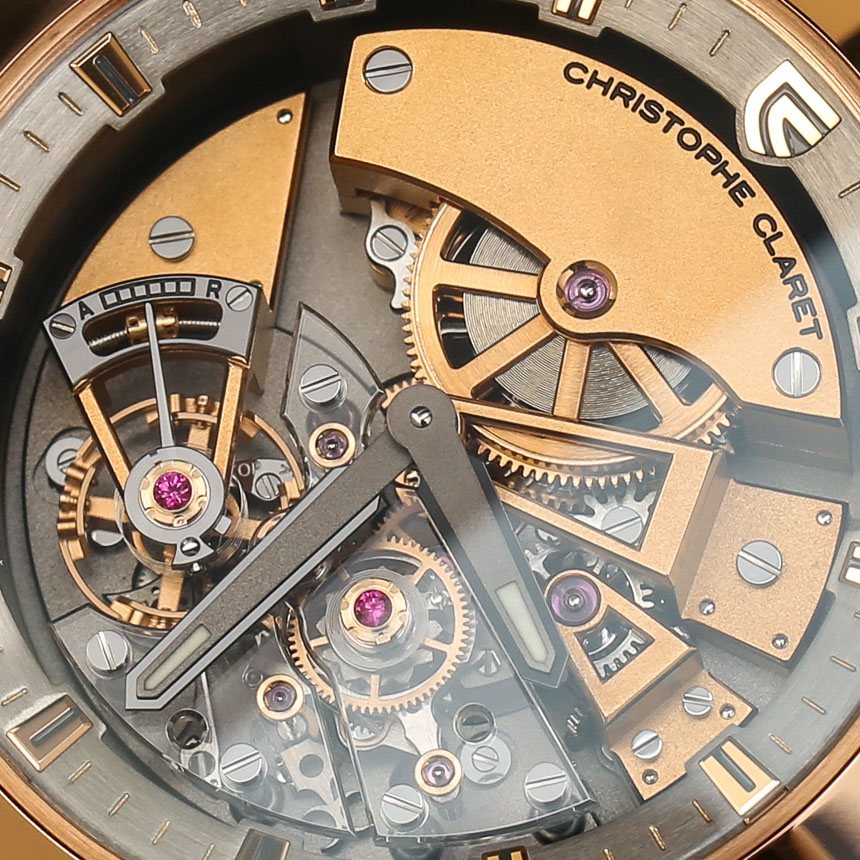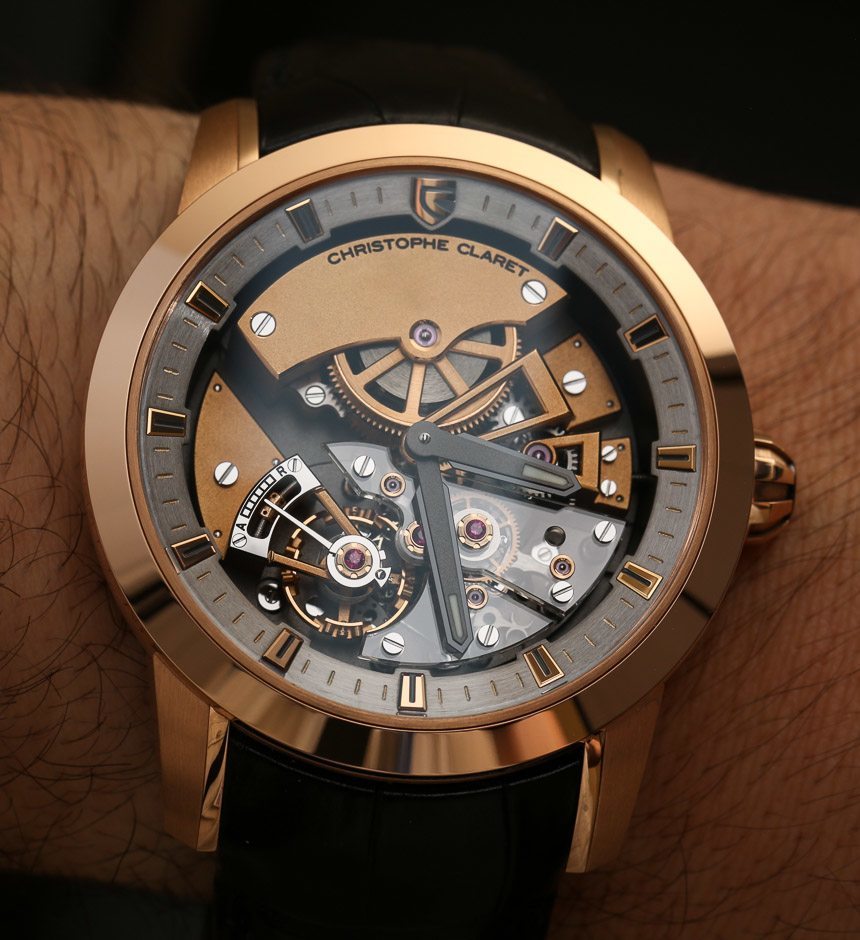
I was a bit surprised at how much I ended up liking the 2014 Christophe Claret Maestoso watch. This is the first “time only” watch Christophe Claret has ever produced under his own brand name and, as far as I know, the only watch that he produced that solely indicates the time. The simplicity of a time-only ultra-complicated watch is ironic. How can a watch be so complicated if it just tells the time? How does it find appeal for watch lovers and high-end collectors who demand ever greater technical and visual achievements? Those are important questions and ones that I will attempt to answer.
Earlier in 2014, aBlogtoWatch debuted the Christophe Claret Maestoso watch here. Visually, the concept is similar to the last few Christophe Claret timepieces for men that have come out, such as the 2013 Christophe Claret Soprano. That is because Christophe Claret has been using a similar style case. While interesting, sometimes I feel that more case diversity would help emphasize the extraordinary nature of the movements within. For each unique and special movement Christophe Claret devises, I sort of want there to be a unique and special case for them to live in.
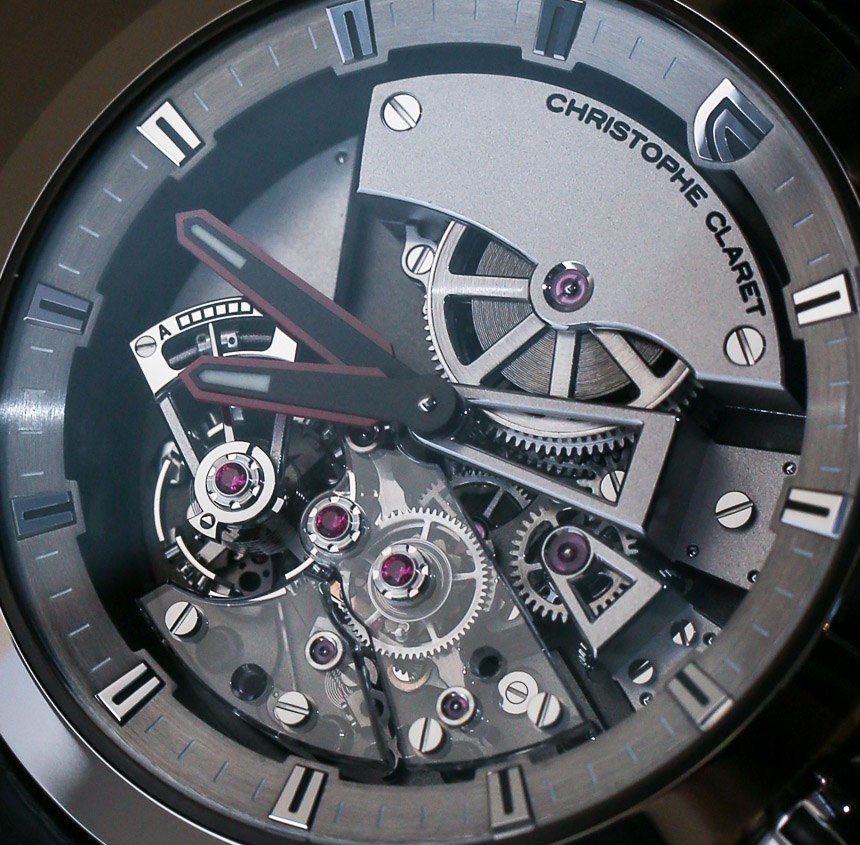
In person, the intricate movement of the Christophe Claret Maestoso is beautiful. Use of transparent sapphire crystal bridges makes what is essentially a vintage style movement very modern looking. The large facet-cut rubies are also an interesting touch that you really don’t see very much at all. Those are in addition to the more traditional synthetic ruby palettes used in the movement.
So the question you should ask is, being a Christophe Claret watch, what is so special about the Maestoso collection? The answer is a detent escapement and a constant force mechanism. Is that a big deal? Yes and no. Yes, in the sense that producing a detent escapement in a mechanical wristwatch was once deemed impossible, and no, because in a sense it is a product aimed only at the most hardcore of watch nerds. That said, only 60 Maestoso watches will ever be produced, but the appeal for most people is going to be in the elegant simplicity of their operation versus the challenges in designing a detent escapement for a wrist watch.
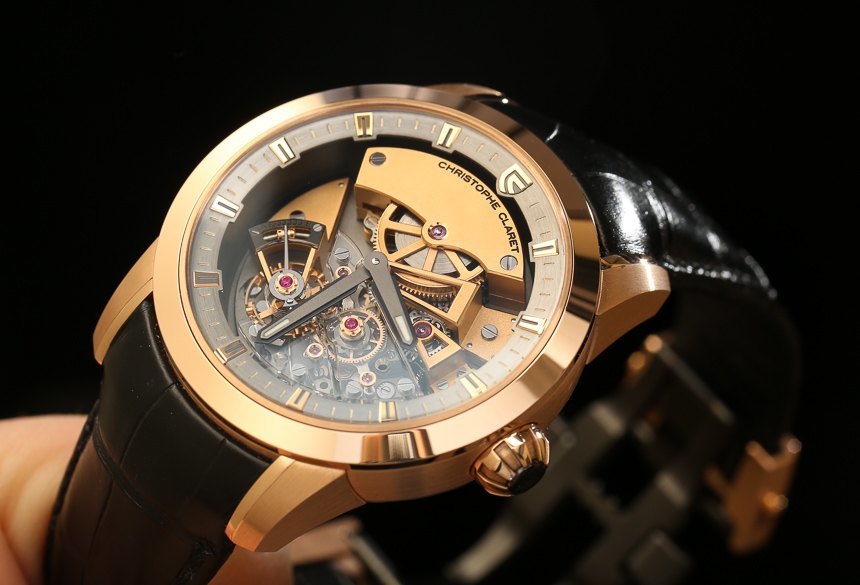
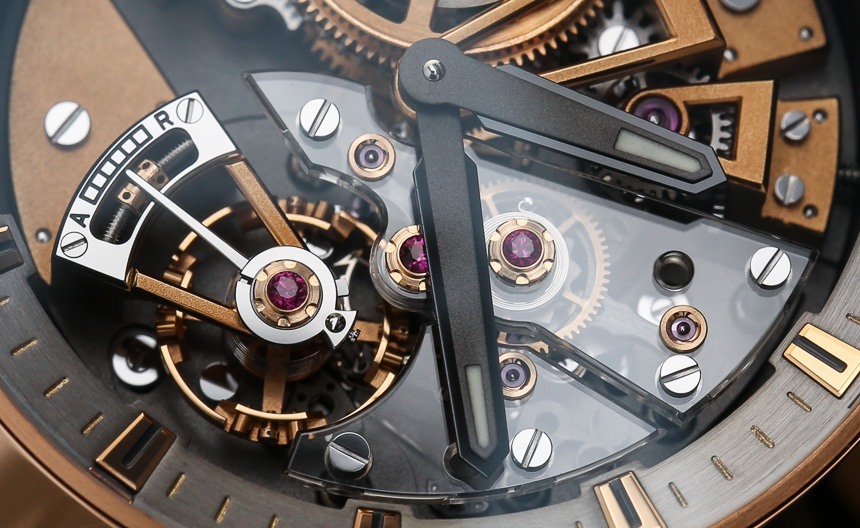
A detent escapement is used in some mechanical clocks and is considered very stable over time. The problem is that most of them must be very stable themselves, and movement of the clock would harm their operation. So the challenge in making a detent escapement for a wristwatch was making sure it could be moved and jolted around. Christophe Claret developed a new anti-shock system for the detent escapement so that it could be used in a wrist watch. I discuss more about detent versus lever escapements and what Christophe Claret did to incorporate them into the Maestoso watch in our earlier article on the watch linked to above.
The whole point of the transparent sapphire crystal bridges is to offer a view into their operation. The detent escapement is difficult to see, and honestly only serious watch movement lovers will know what they are looking at. Having said that a detent escapement makes a different sound than the regular ticking of a lever escapement watch and does have its own visual characteristics.
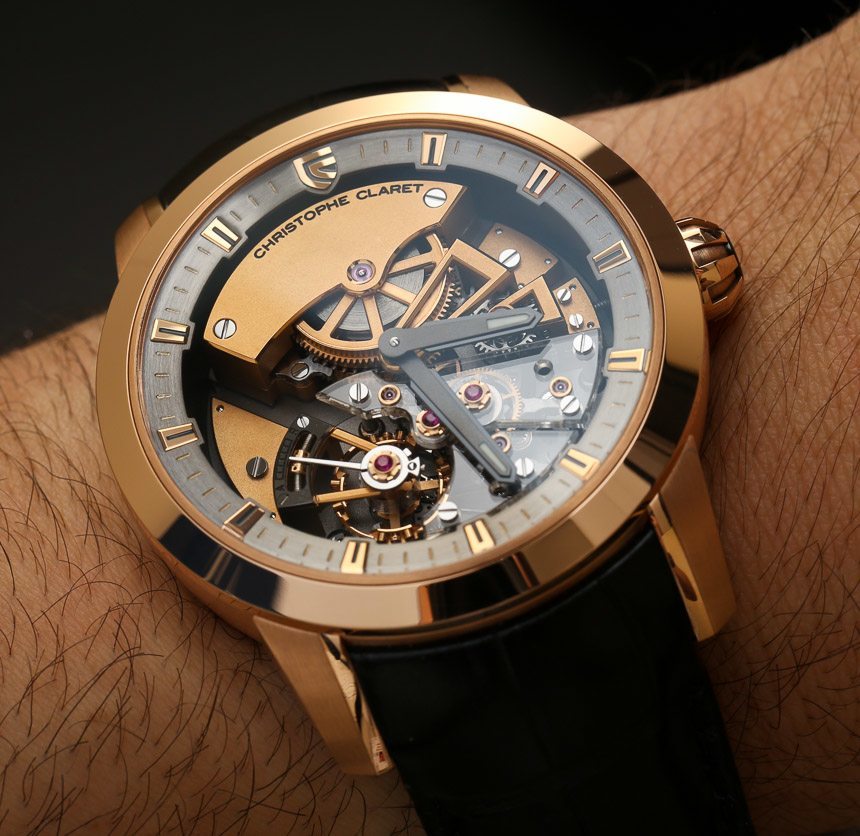
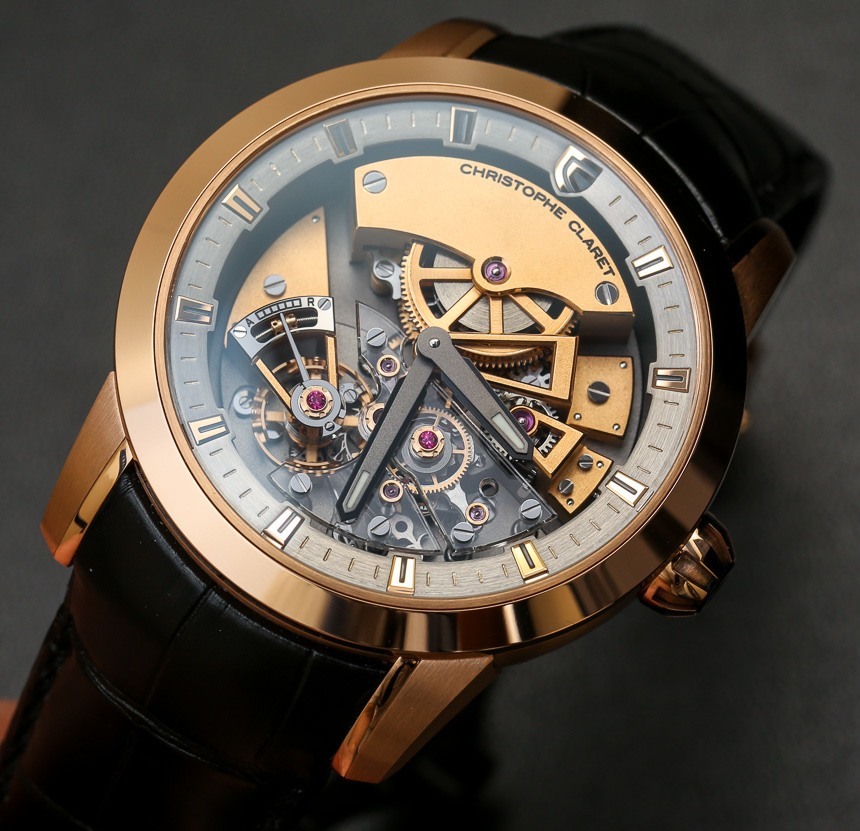
Something that is easy to see and enjoyable in the in-house made and designed caliber DTC07 movement is the cylindrical balance spring. Unlike most normal “flat” balance (hair) springs, the one in the Maestoso is more three-dimensional and shaped like a cylinder. There are various advantages for this and a major reason they aren’t used more is that they are not only difficult to produce, but the simple fact that cylindrical balance springs take up a lot more space than flat ones. While high-end watches today like to play with historic watch mechanics, we should not forget the principle goal of all wrist watches from the beginning was successfully miniaturizing clocks and pocket watches into not only a smaller space, but also a mobile space that needed to put up with shock and motion.
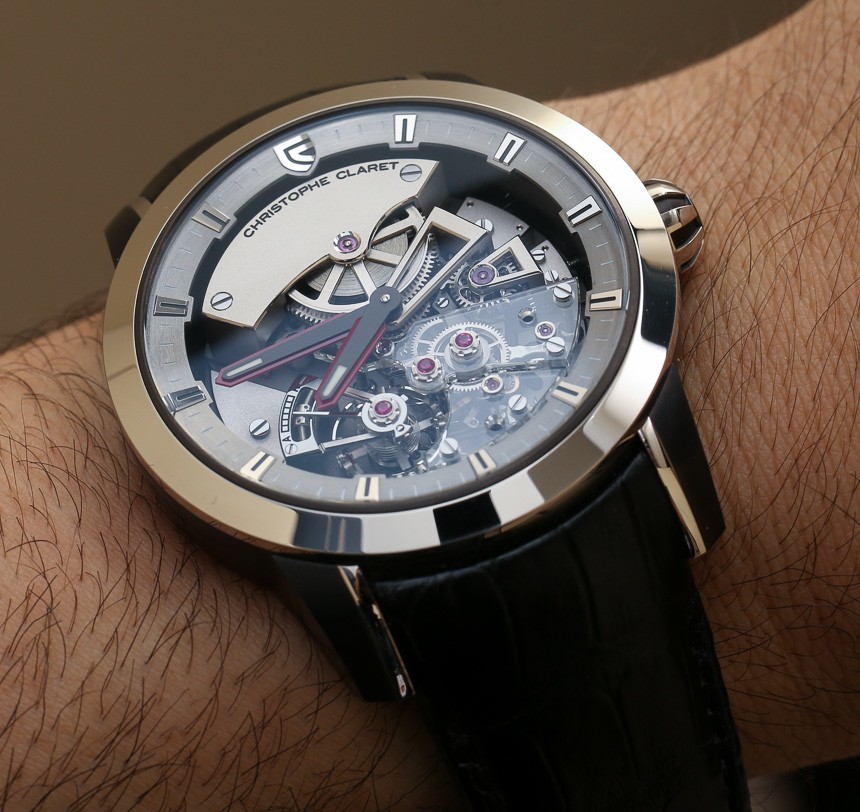
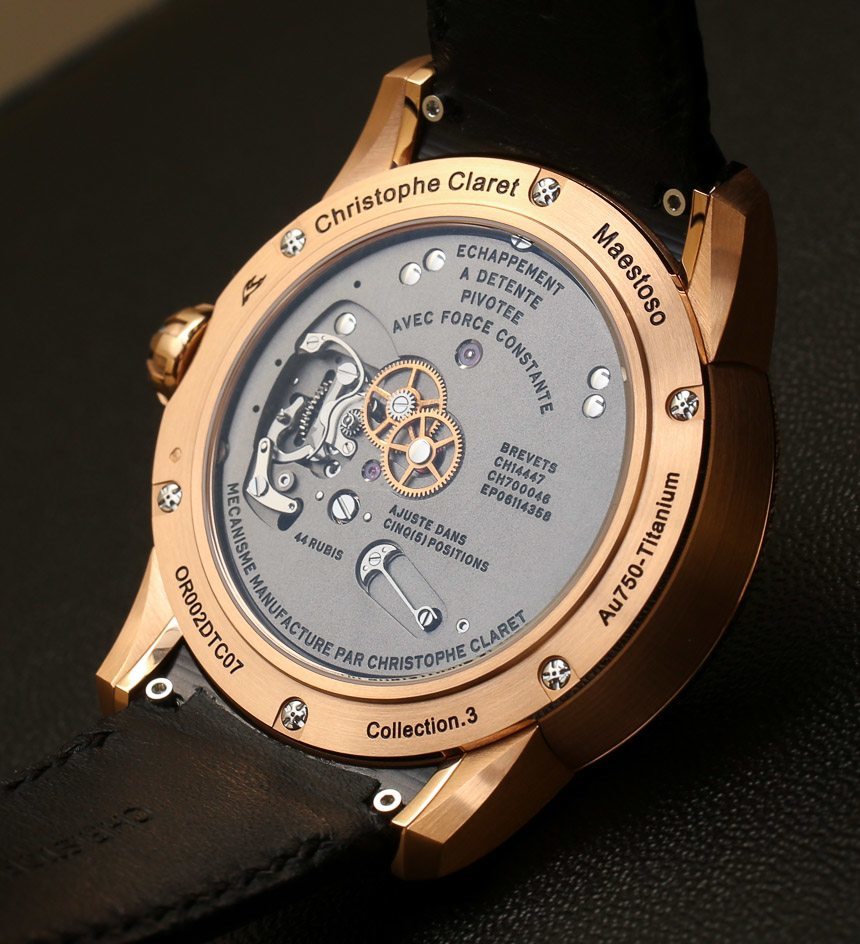
To a large degree, the movement in the Christophe Claret Maestoso is built to be “upside down.” By this I mean that most of the mechanism is visible through the dial, while the rear of the watch is relatively plain. Pretty much the only thing you see is the keyless winding system for the crown. Flip the case over again and you’ll see the skeletonized mainspring barrel which is also neat to look at. According the Christophe Claret, the Maestoso has a total power reserve of over 80 hours, and of course is manually wound.
Even though this is already a thick movement, I think it would have been wonderful for Christophe Claret to design the Maestoso as an automatic. That would have really added another level of functionality. Christophe Claret himself strikes me as the kind of person who really enjoys manually winding a watch, but I can’t help but feel that the Maestoso would have made for a cool automatic – especially since there wouldn’t have been much for the rotor to “hide” on the back of the case.
